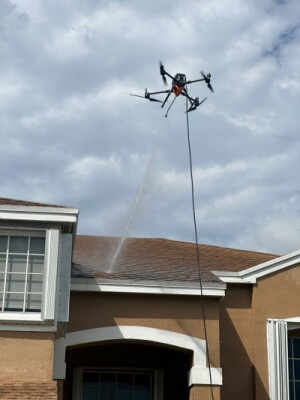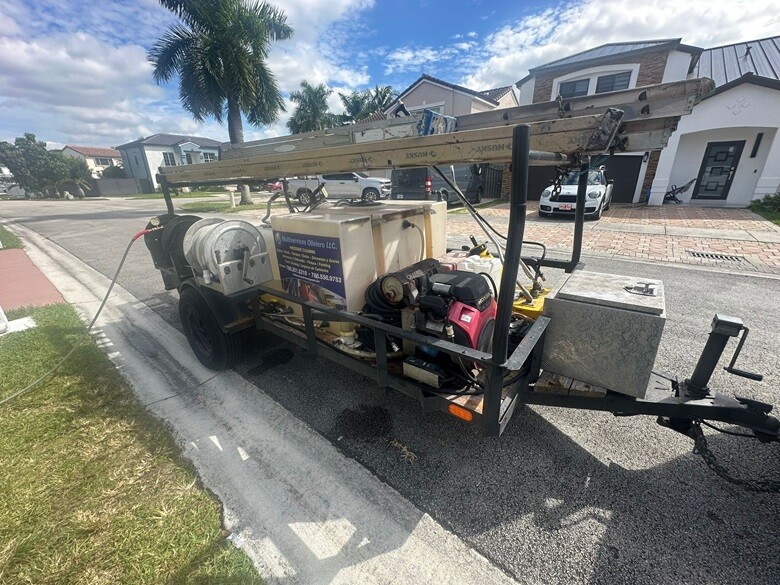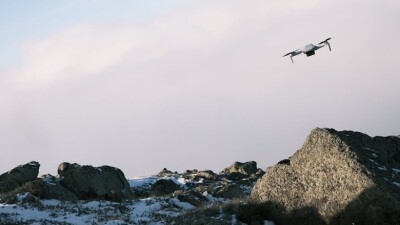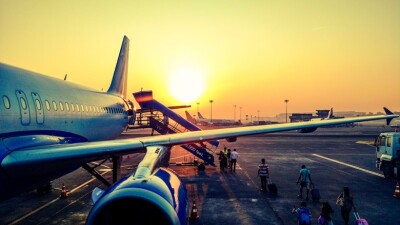Hardly anyone waiting for the publication of the Federal Aviation Administration (FAA) Part 108 Notice of Public Rule Making (NPRM), is doing so idling. Over the past few years, we have seen a proliferation of incredibly creative business models and new solutions to old problems—models and solutions that work in accordance with existing Part 107 regulations.
Even though restrictive in terms of weight and proximity to the operator, Part 107 leaves the door wide open to a series of businesses that do not require long distances or higher altitudes to become profitable.
Agricultural spraying, inspections of telecommunications and transportation infrastructure, and many others are flourishing in the pre-BVLOS (Beyond Visual Line of Sight) era. One particular business niche has caught our attention due to its rapid development and the surprisingly fast acceptance of its customer base is exterior cleaning of buildings with drones.
When we analyzed the reasons for the rapid growth of this sub-segment of uncrewed aviation, we quickly understood the benefits, the reduction in costs and personnel safety to building managers and the borderline absence of significant regulations. All these elements created the perfect storm for the segment to explode into a profitable business model.
Companies around the world are discovering the benefits of replacing dangerous scaffolding and harnessing hardware with simple to operate drones that can apply thousands of PSI’s (pounds per square inch) to windows, roofs, and facades hundreds of feet high.
These companies are basically divided into two categories: the ones which focus on the designing and manufacturing of cleaning drones and the ones that provide the service. It is no surprise that there are more of the latter and fewer of the former, given the complexity of aeronautical engineering and the initial costs of testing and the investment-heavy business of aviation in general (barriers of entry).
 But there is also a third possibility in which companies are turning existing drones into powerful cleaning tools by applying just a few simple modifications, as opposed to creating an entirely new platform.
But there is also a third possibility in which companies are turning existing drones into powerful cleaning tools by applying just a few simple modifications, as opposed to creating an entirely new platform.
We spoke with René Paéz, CEO of the USA Drone Academy in Miami, Florida, who told us about his foray into the fascinating business of cleaning drones.
“For years, we have been creating a new generation of pilots to feed this new industry of remotely piloted aircraft, but lately we’ve been asked to go a step further,” René said. “Some of the same companies that are hiring our graduates are also asking for concrete hardware solutions to their problems, not just personnel, but aircraft that can solve specific problems in specific niche markets.”
“We were asked about cleaning drones, and without much hesitation, we bought a DJI Matrice 350 with an effective flying time of 40 minutes and a powerful lifting force to be our platform of choice,” René said. “Using a CAD/CAM system and a 3D printer, we designed an attachment to the drone that could be used to hook a high-pressure hose, making sure that the weight and balance (W&B) of the aircraft were not modified in any substantial way and proceeded to perform some tests.”
During these tests, the inevitable changes took place, but in principle the modified aircraft could apply 2,500 PSI using a mixture of water and certain cleaning chemicals to a building exterior for 40 minutes at a rate of 3 to six gallons per minute.
“You can clean a lot of vertical surfaces in 40 minutes using the correct mixture of water and cleaning solution, if the pilot knows what he or she is doing,” René stated. “And that is where we fit in perfectly. Now we can supply our customers with the right combination of the aerial platform and the trained personnel to do their job more effectively. It all depends on the pump that you use and the ability of the pilot to handle the powerful forces that water at high pressure exerts on the drone.  Keep in mind that the rotors of the aircraft are generating a strong down draft and that force needs to be controlled while a lateral thrust is creating a deviation from traditional flying practices.”
Keep in mind that the rotors of the aircraft are generating a strong down draft and that force needs to be controlled while a lateral thrust is creating a deviation from traditional flying practices.”
Traditional pressure washing companies are approaching René and his team to add this valuable tool to their services, especially in the small but highly lucrative niche of unifamilial-house roof cleaning, something that a growing number of high-end HOA’s (Homeowners Associations) are demanding from their residents in South Florida.
“Small and medium-size pressure cleaning companies have approached us with their request for a complete turn-key solution to replace their high-risk roof cleaning practices,” René said. “In the past, workers had to climb to roofs and handle cumbersome equipment in dangerous and steep tiles, generating high insurance premiums and a constant turn-around of employees. Now they can send their employees to our academy and buy the drone, all in one easy transaction.”
(If you would like to know more about these products or services write to René at [email protected])
There is no doubt that in the next few years these platforms will continue to improve, flying times will increase and this sub-segment of the entire uncrewed aviation industry will grow into a multi-billion-dollar market niche.















Comments